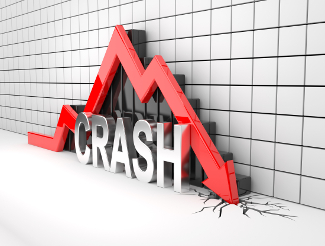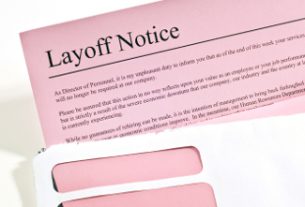Eight months after the stock market turbulence that rocked markets in February, the markets are at it again. Near-record drops, severe slides, and big bouncing recoveries are back again. But while many mainstream financial analysts continue to urge investors to buy the dip, arguing that stock markets are still a great investment, those who remember the events of 2007-2009 and the suffering that stock market investors had to endure would argue otherwise. Markets are still near all-time highs and thus aren’t a great buy. Those who buy in right now are buying in near the top, hoping that more growth is on the way. But they may be sorely disappointed.
Gains Aren’t Gains Until They’re Realized
The first thing to understand is that stock market gains aren’t really gains until they’re realized. You may look at your 401(k), IRA, or TSP balance and think that you’re doing pretty well, but until you sell those holdings and reap the benefits, that wealth is only on paper.
And that’s the tough thing about investing through 401(k)s, IRAs, and other types of retirement accounts. You won’t be able to touch that money until you’re 59 1/2. So if you’re in your early 50s right now and nervous about the future of your retirement investments, you may be forced to ride things out in the event that markets crash in the near future.
Don’t Give In to the Euphoria
The recent return of stock markets to all-time high levels had many investors overjoyed that markets were gaining again. Many who had been sitting on the sidelines since February, waiting to see which direction markets would move, got back in, thinking that markets were going to make another great run. But it appears that the recent highs were all we’re going to get.
Those who sat things out during the last dip and got back in on this latest upswing are just buying in near the top of the market, hoping that there’s still enough momentum in stock markets to push things even higher. But as last week’s large drop showed, things are fizzling out. An economy that’s truly strong and whose stock market pricing is based on strong underlying fundamentals doesn’t see drops that large. And as the reality that an economic downturn is just around the corner begins to set in, we’re going to see more drops like that in the future.
The Dangers of Buying at the Top
The danger of buying in near the top of a market is that it makes investors reluctant to sell their assets to cut their losses. If you buy a stock at $48 and it rises to $100 before falling to $45, you may not be too distressed at selling it at $45. That’s only a 6.25% loss. But if you buy in at $90 and watch it rise to $100, you’re going to be reluctant to sell at $85, $80, or $75. You’ll keep hoping for another bump above $90, hoping to recoup your money. Then when it finally falls to $45 you may give up hope and sell your holdings, booking a 50% loss.
That happens all too often to investors who get starry-eyed and hope for big gains. They buy in too high, don’t sell at the top, then sell out at the bottom. It’s become so common among investors that we see many writers warning about that behavior over and over. Even those who understand the danger in buying in at the top can fall prey to the urge to jump in, thinking that this time things will be different. But it never is.
Only Gold Can Protect You
So you realize that stock markets are overvalued, at their peak, and headed for a crash. The question then becomes, how do you go about protecting your assets? In an ideal world you might just liquidate your holdings and hold some cold, hard cash. But as we already know, doing that before you turn 59 1/2 will cost you a significant penalty.
If your retirement assets are in a 401(k) account, you won’t be able to hold cash within your account as your options will be pretty much limited to whatever limited number of stock and bond funds your employer’s plan offers. With stocks poised to tank and the bull bond market looking to burst, you really don’t have any great options within your plan.
The same thing goes for most IRAs. You won’t have a pure cash option, at best you might be able to move your money into a money market mutual fund, whose shares are supposed to never “break the buck.” But as we saw during the financial crisis, money market mutual funds aren’t immune from losing money either.
That leaves the option of rolling over your funds into a precious metals IRA. Existing retirement assets you already hold in a 401(k), IRA, or TSP account can be rolled over tax-free into a gold or silver IRA, allowing you to invest in precious metals while still retaining all the tax advantages of a traditional retirement account.
With gold having gained 25% in value during the period of the financial crisis in which stocks lost more than 50% of their value, there’s no better asset than gold to safeguard your retirement savings. Gold has protected investors against financial crisis and economic breakdowns for centuries, and will continue to do so well into the future.
This article was originally posted on Goldco.




